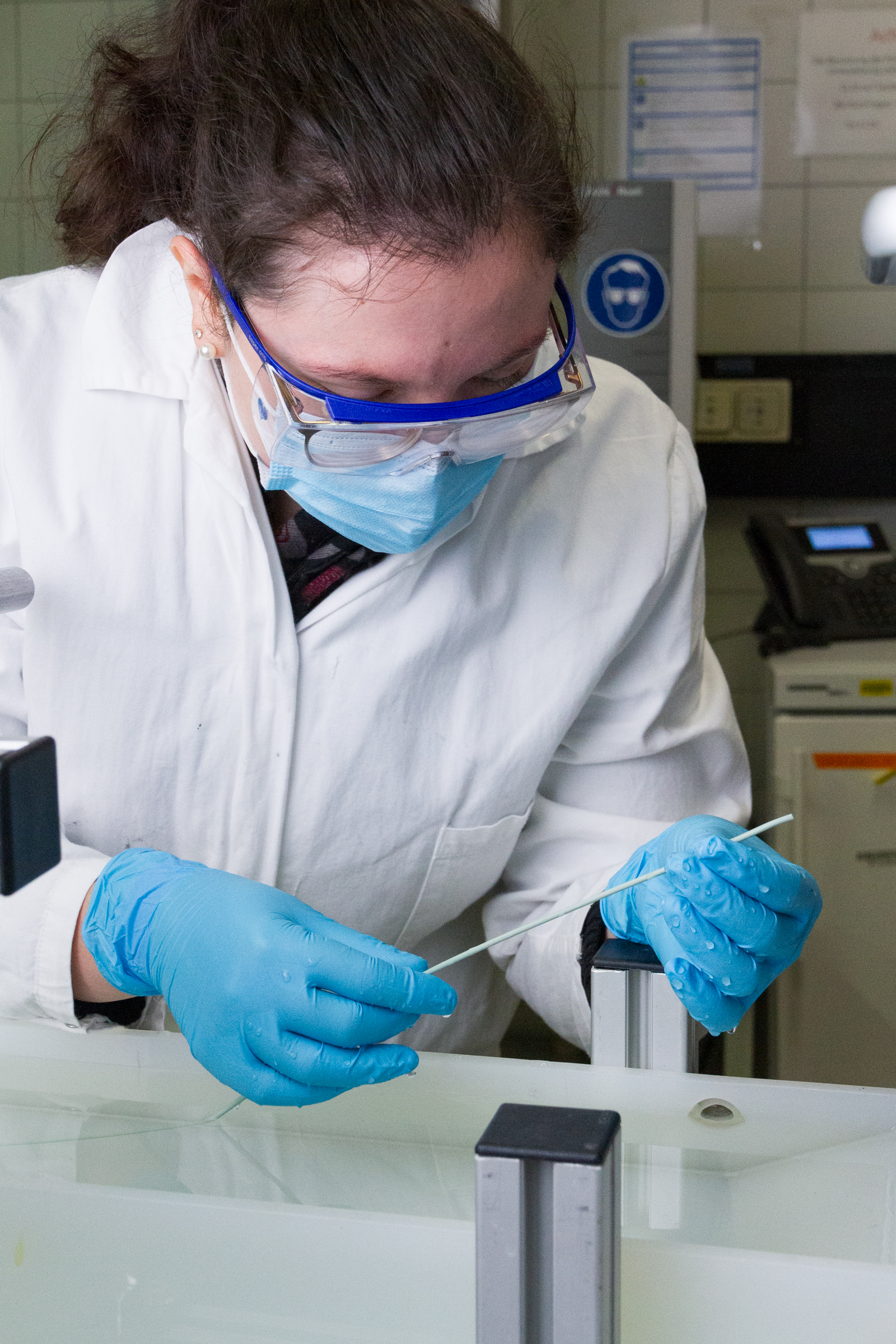The big advantage of hollow fiber membranes is their large specific separation range. For their production, we have spinnerets that allow fibers with outer diameters in the range of 0.5 to 4 millimeters and wall thicknesses of 50 to 500 µm.
We succeed in producing such fibers from laboratory scale to pilot scale, where the fibers are continuously taken up by a reel.
We have extensive experience with various polymers, for example polysulfone, polyethersulfone, polyacrylonitrile, polyvinylidene fluoride, polylactide as well as self-produced polymers. In addition, we have special knowledge about the further processing of dispersions to mixed-matrix membranes. Here we can use polymer particles as well as ceramic or even metallic powders. These particles are homogeneously dispersed into the polymer matrix during the phase inversion process.
In this way, mixed-matrix membranes can be equipped with special functionalities. In addition, we can produce full-ceramic and metal membranes by sintering.
 Fraunhofer Institute for Interfacial Engineering and Biotechnology IGB
Fraunhofer Institute for Interfacial Engineering and Biotechnology IGB